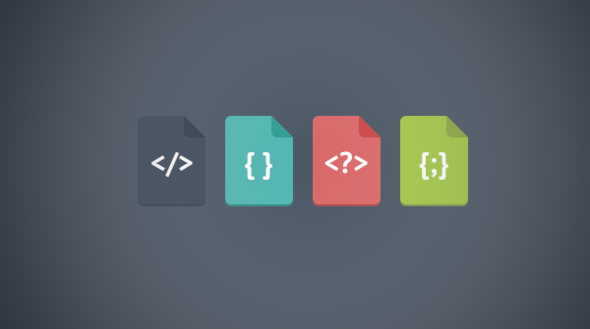Detailed introduction to the detailed tutorial
Using cursor data After a cursor is opened, you can use the FETCH statement to access each row of it separately. FETCH specifies what data (required columns) to retrieve and where the retrieved data is stored. It also moves the internal row pointer in the cursor forward so that the next FETCH statement retrieves the next row (without reading the same row repeatedly). The first example retrieves a single row (the first row) from the cursor: input: create procedure processorders() BEGIN -- declare local variables declare o int; -- declare the cursor declare ordernumbers cursor for select order_num from orders: -- o
1. MySQL using cursor data instance tutorial

##Introduction: Using Cursor Data After a cursor is opened, you can use the FETCH statement to access each of its rows separately. FETCH specifies what data (required columns) to retrieve and where the retrieved data is stored. It also moves the internal row pointer in the cursor forward so that the next FETCH statement retrieves the next row (without reading the same row repeatedly). The first example retrieves a single row (the first row) from the cursor:
2. Share a detailed tutorial on HTML URL

Introduction: HTML Uniform Resource Locators (UniformResourceLocators) URL is a web page address. The URL can be composed of letters, such as
3. Linux multi-threaded programming detailed tutorial (threads implement communication code through semaphores)

Introduction: This article mainly introduces the detailed tutorial on Linux multi-thread programming, and provides the code for threads to communicate through semaphores. Please refer to it for reference.
4. Detailed tutorial on this, self and parent keywords in PHP5_PHP tutorial
Introduction: PHP5 Detailed tutorial on this, self and parent keywords. First, let’s understand the above three keywords: this, self, parent. It’s easier to understand literally. It refers to this, self, father. Haha, it’s more fun. Let’s establish a few concepts first. These three keywords are divided into
5. Detailed explanation of PHP file operations_PHP tutorial
Introduction: Detailed explanation of PHP file operations. This article is a detailed tutorial on PHP file operations. It is very detailed and comprehensive. Now I share it with you. I hope it will be helpful to friends who are learning PHP development. The code is as follows: $path1= E:/myphp/text.tx
6. PHP correct configuration of mysql detailed tutorial_PHP tutorial
Introduction: Detailed tutorial on correctly configuring mysql with PHP. PHP can be combined with apache normally, and common errors include: PHP Warning: PHP Startup: Unable to load dynamic library..., Fatal error: Call to undefined function mysql_connect
##7.mysql installation and configuration detailed tutorial (1)_MySQL
 ##Introduction: This article is mainly for everyone This article introduces the mysql installation and configuration tutorial in detail, and shares the mysql installation steps with a combination of pictures and text. Interested friends can refer to
##Introduction: This article is mainly for everyone This article introduces the mysql installation and configuration tutorial in detail, and shares the mysql installation steps with a combination of pictures and text. Interested friends can refer to
8.
Axure Drawing Page frame graphic and text detailed tutorial_html/css_WEB-ITnoseIntroduction: Axure drawing page frame graphic and text detailed tutorial
9 .
Detailed tutorial on this, self and parent keywords in PHP5Introduction: Detailed tutorial on the this, self and parent keywords in PHP5. First, let’s understand the above three keywords: this, self, parent. It’s easier to understand literally. It refers to this, self, father. Haha, it’s more fun. Let’s establish a few concepts first. These three keywords are divided into 10. Detailed explanation of PHP file operations Introduction: Detailed explanation of PHP file operations. This article is a detailed tutorial on PHP file operations. It is very detailed and comprehensive. Now I share it with you. I hope it will be helpful to friends who are learning PHP development. The code is as follows: $path1= E:/myphp/text.tx
The above is the detailed content of Detailed introduction to the detailed tutorial. For more information, please follow other related articles on the PHP Chinese website!

Hot AI Tools

Undresser.AI Undress
AI-powered app for creating realistic nude photos

AI Clothes Remover
Online AI tool for removing clothes from photos.

Undress AI Tool
Undress images for free

Clothoff.io
AI clothes remover

Video Face Swap
Swap faces in any video effortlessly with our completely free AI face swap tool!

Hot Article

Hot Tools

Notepad++7.3.1
Easy-to-use and free code editor

SublimeText3 Chinese version
Chinese version, very easy to use

Zend Studio 13.0.1
Powerful PHP integrated development environment

Dreamweaver CS6
Visual web development tools

SublimeText3 Mac version
God-level code editing software (SublimeText3)

Hot Topics
 Explain JSON Web Tokens (JWT) and their use case in PHP APIs.
Apr 05, 2025 am 12:04 AM
Explain JSON Web Tokens (JWT) and their use case in PHP APIs.
Apr 05, 2025 am 12:04 AM
JWT is an open standard based on JSON, used to securely transmit information between parties, mainly for identity authentication and information exchange. 1. JWT consists of three parts: Header, Payload and Signature. 2. The working principle of JWT includes three steps: generating JWT, verifying JWT and parsing Payload. 3. When using JWT for authentication in PHP, JWT can be generated and verified, and user role and permission information can be included in advanced usage. 4. Common errors include signature verification failure, token expiration, and payload oversized. Debugging skills include using debugging tools and logging. 5. Performance optimization and best practices include using appropriate signature algorithms, setting validity periods reasonably,
 How does session hijacking work and how can you mitigate it in PHP?
Apr 06, 2025 am 12:02 AM
How does session hijacking work and how can you mitigate it in PHP?
Apr 06, 2025 am 12:02 AM
Session hijacking can be achieved through the following steps: 1. Obtain the session ID, 2. Use the session ID, 3. Keep the session active. The methods to prevent session hijacking in PHP include: 1. Use the session_regenerate_id() function to regenerate the session ID, 2. Store session data through the database, 3. Ensure that all session data is transmitted through HTTPS.
 What are Enumerations (Enums) in PHP 8.1?
Apr 03, 2025 am 12:05 AM
What are Enumerations (Enums) in PHP 8.1?
Apr 03, 2025 am 12:05 AM
The enumeration function in PHP8.1 enhances the clarity and type safety of the code by defining named constants. 1) Enumerations can be integers, strings or objects, improving code readability and type safety. 2) Enumeration is based on class and supports object-oriented features such as traversal and reflection. 3) Enumeration can be used for comparison and assignment to ensure type safety. 4) Enumeration supports adding methods to implement complex logic. 5) Strict type checking and error handling can avoid common errors. 6) Enumeration reduces magic value and improves maintainability, but pay attention to performance optimization.
 Describe the SOLID principles and how they apply to PHP development.
Apr 03, 2025 am 12:04 AM
Describe the SOLID principles and how they apply to PHP development.
Apr 03, 2025 am 12:04 AM
The application of SOLID principle in PHP development includes: 1. Single responsibility principle (SRP): Each class is responsible for only one function. 2. Open and close principle (OCP): Changes are achieved through extension rather than modification. 3. Lisch's Substitution Principle (LSP): Subclasses can replace base classes without affecting program accuracy. 4. Interface isolation principle (ISP): Use fine-grained interfaces to avoid dependencies and unused methods. 5. Dependency inversion principle (DIP): High and low-level modules rely on abstraction and are implemented through dependency injection.
 Explain late static binding in PHP (static::).
Apr 03, 2025 am 12:04 AM
Explain late static binding in PHP (static::).
Apr 03, 2025 am 12:04 AM
Static binding (static::) implements late static binding (LSB) in PHP, allowing calling classes to be referenced in static contexts rather than defining classes. 1) The parsing process is performed at runtime, 2) Look up the call class in the inheritance relationship, 3) It may bring performance overhead.
 What is REST API design principles?
Apr 04, 2025 am 12:01 AM
What is REST API design principles?
Apr 04, 2025 am 12:01 AM
RESTAPI design principles include resource definition, URI design, HTTP method usage, status code usage, version control, and HATEOAS. 1. Resources should be represented by nouns and maintained at a hierarchy. 2. HTTP methods should conform to their semantics, such as GET is used to obtain resources. 3. The status code should be used correctly, such as 404 means that the resource does not exist. 4. Version control can be implemented through URI or header. 5. HATEOAS boots client operations through links in response.
 How do you handle exceptions effectively in PHP (try, catch, finally, throw)?
Apr 05, 2025 am 12:03 AM
How do you handle exceptions effectively in PHP (try, catch, finally, throw)?
Apr 05, 2025 am 12:03 AM
In PHP, exception handling is achieved through the try, catch, finally, and throw keywords. 1) The try block surrounds the code that may throw exceptions; 2) The catch block handles exceptions; 3) Finally block ensures that the code is always executed; 4) throw is used to manually throw exceptions. These mechanisms help improve the robustness and maintainability of your code.
 What are anonymous classes in PHP and when might you use them?
Apr 04, 2025 am 12:02 AM
What are anonymous classes in PHP and when might you use them?
Apr 04, 2025 am 12:02 AM
The main function of anonymous classes in PHP is to create one-time objects. 1. Anonymous classes allow classes without names to be directly defined in the code, which is suitable for temporary requirements. 2. They can inherit classes or implement interfaces to increase flexibility. 3. Pay attention to performance and code readability when using it, and avoid repeatedly defining the same anonymous classes.






